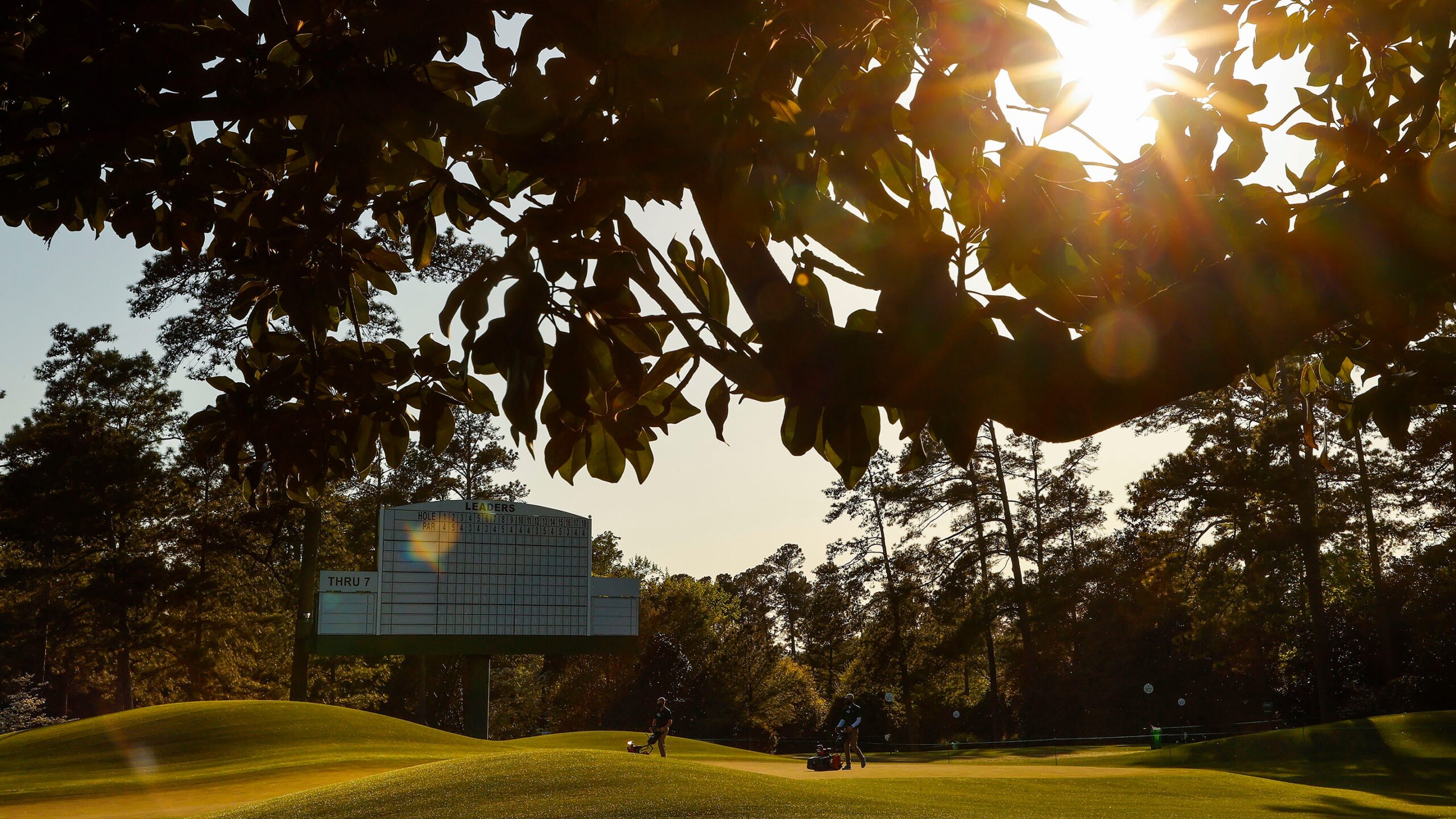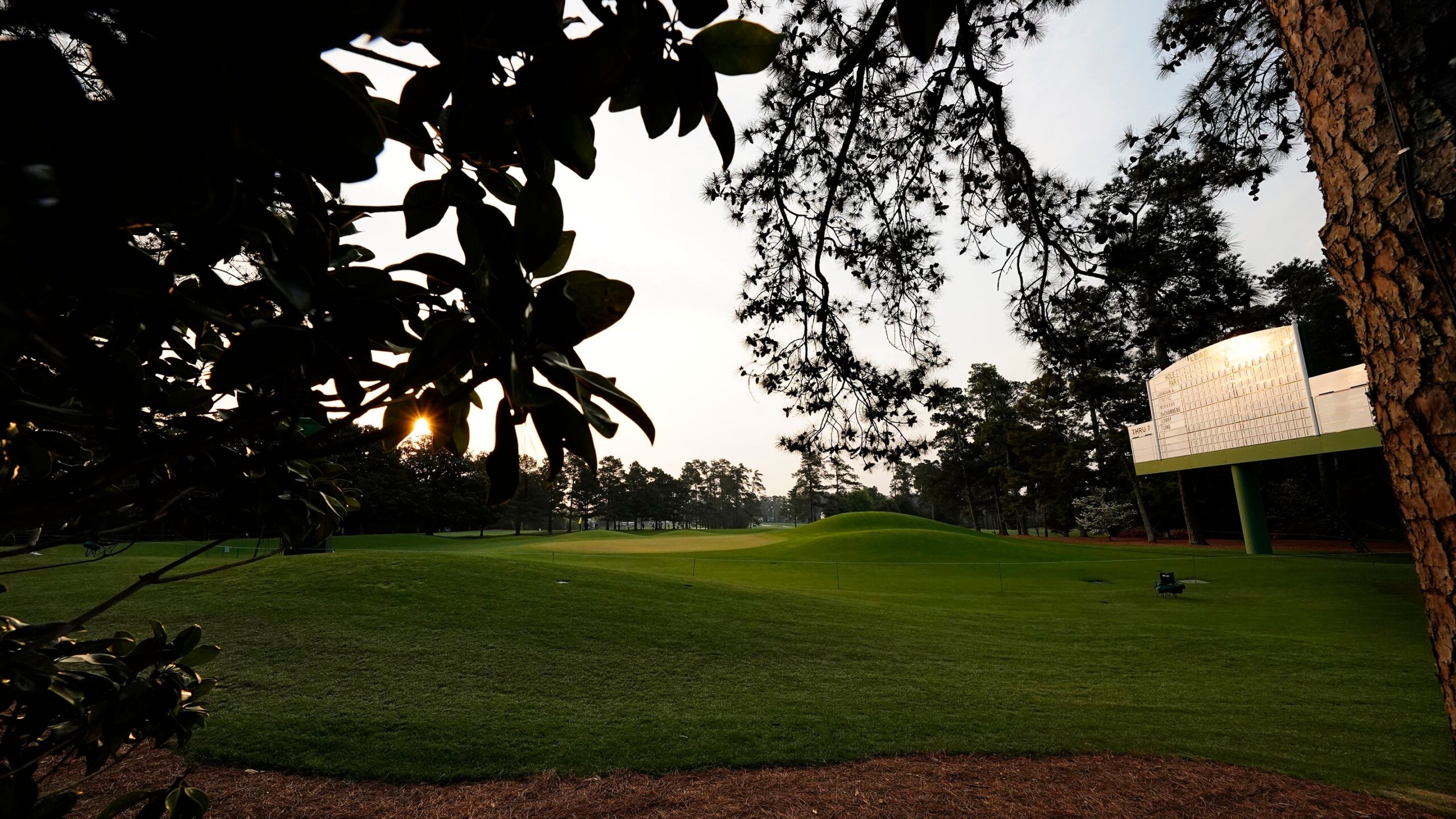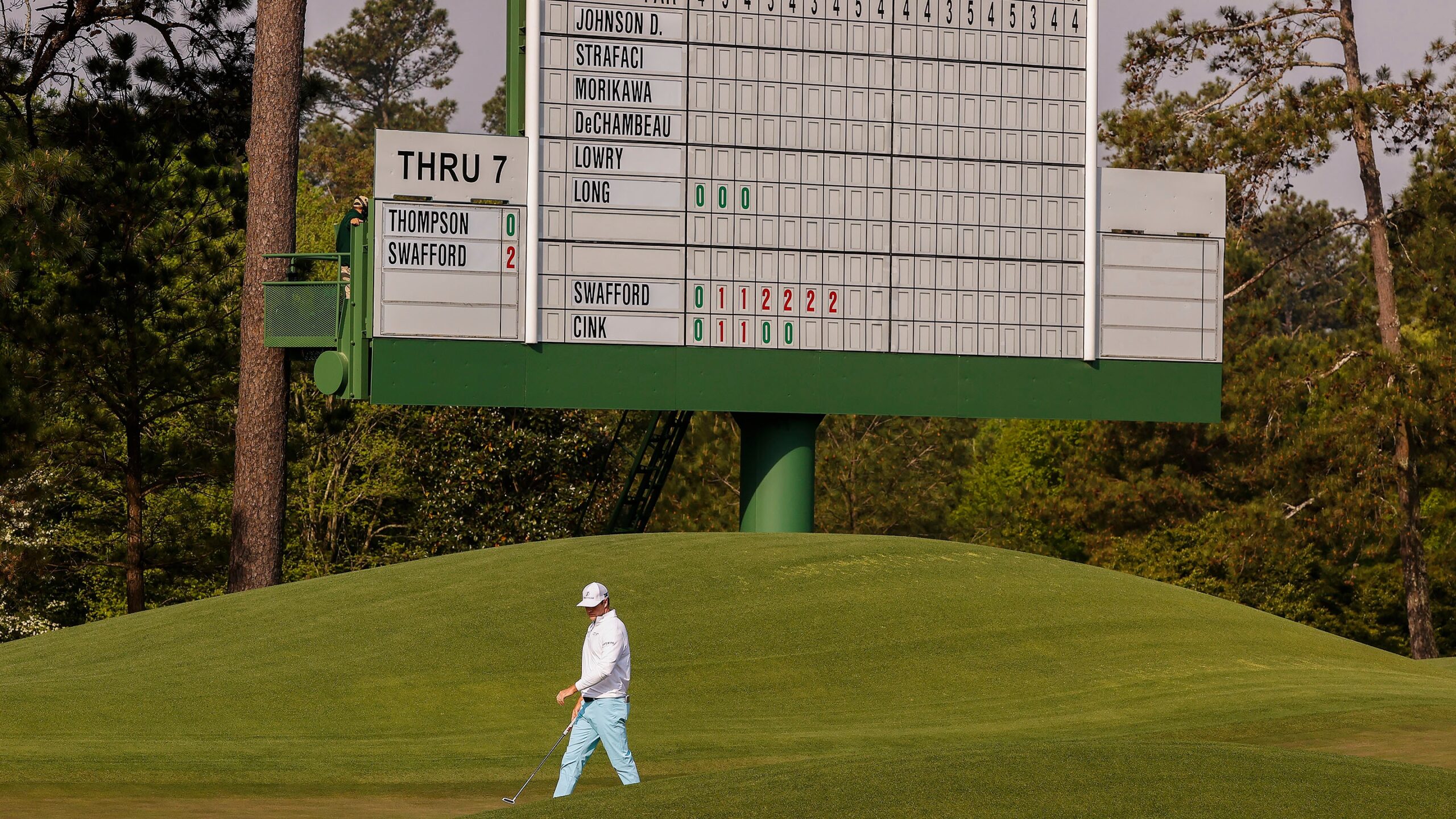Golf course architecture enthusiasts tend to be too devoted to labels. Like fanatics of all stripes, we tend not to accept blurred lines. We rush to put architects and courses in boxes. This is particularly the case when it comes to categorizing an architect as a minimalist (someone who moves little dirt) or a maximalist (someone who prefers to build features to generate interest).
One of Augusta National’s original architects, Alister MacKenzie, has gone down in history as a minimalist, but he was not afraid to move dirt in a maximal manner. He showed this willingness especially in his American work from the late 1920s and early ’30s, including at Augusta National.
MacKenzie and his co-designer Bobby Jones shared an obsession with the Old Course at St. Andrews, but in following this inspiration at Augusta National, they faced a dilemma: the property was dramatic and hilly, a far cry from the subtle, rollicking linksland of St. Andrews. While they could mimic certain hole strategies, they were missing the smallish, “human-sized” humps, bumps, and hollows that define the Old Course’s topography. This is where MacKenzie went into a maximal mode at Augusta National. He created an abundance of smaller-scale ground features to infuse St. Andrews-like interest and strategy into the course. These contours don’t always look natural, nor are they meant to, but they are cleverly placed, and they enhance the stunning slopes of the Georgia terrain.
An example of a hole that is natural on balance but possesses a touch of maximal flair is the par-5 eighth. It plays up and out of Augusta National’s central valley, a huge landform that shows off the dramatic canvas MacKenzie and Jones were given. The tee shot confronts a hill with a bunker and two pronounced mounds built into it.
-

The landing zone on No. 8
-
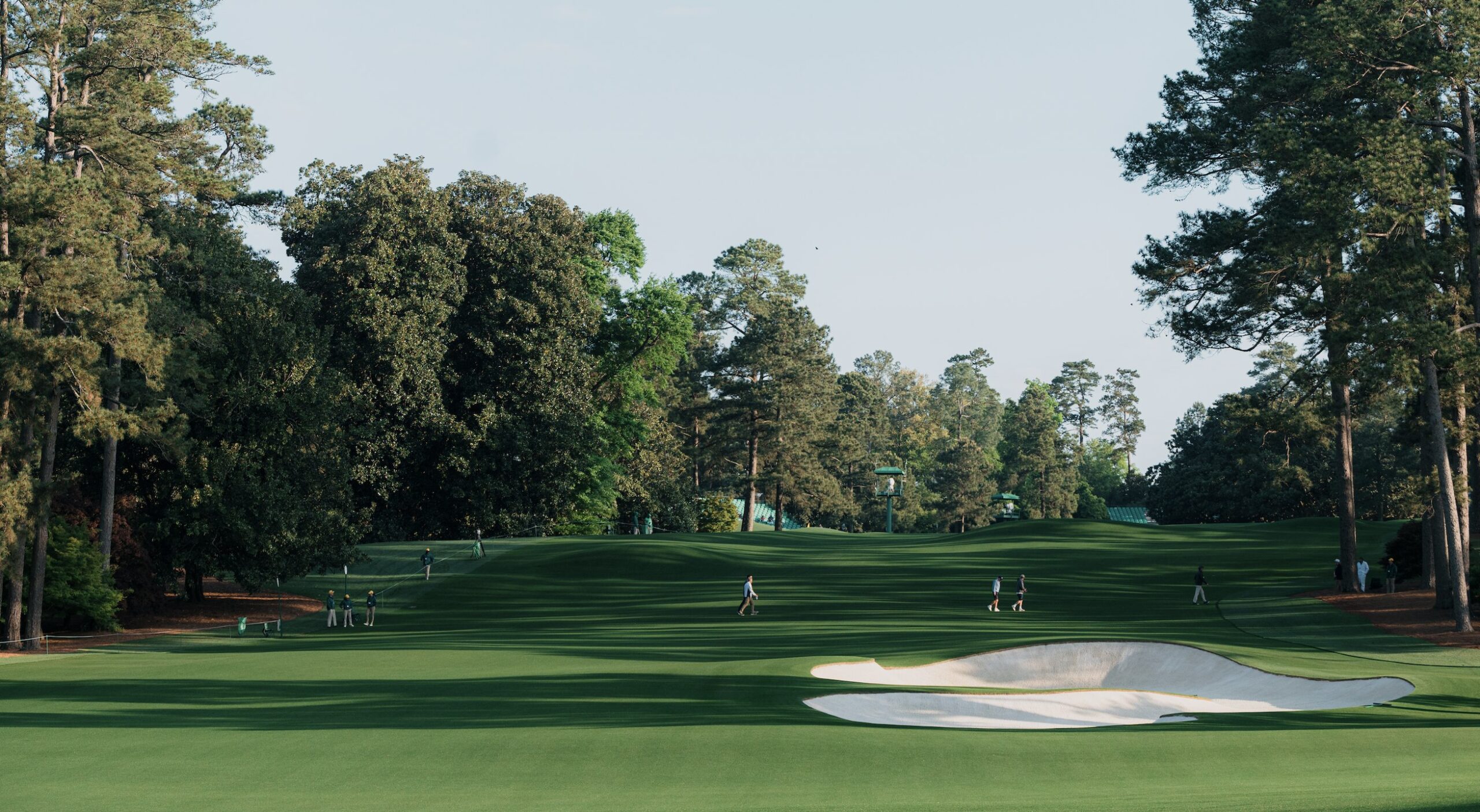
Looking up the hill toward the green
The mounds obscure the view on the second shot and, more importantly, introduce the hole’s theme. That theme is fully revealed when the player crests the hill.
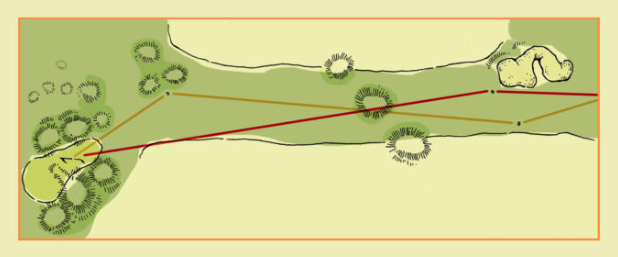
Illustration: Cameron Hurdus
The eighth green sits in a manufactured hollow ringed by mounds. It’s one of the most striking architectural features on the course. The original land at the top of the hill was, on the whole, rather uninteresting, but the intense mounding makes the eighth green one of the more compelling places to play and watch golf at Augusta National. This is a particular asset for a par 5 where players often have 40- to 60-yard pitch approaches.
-
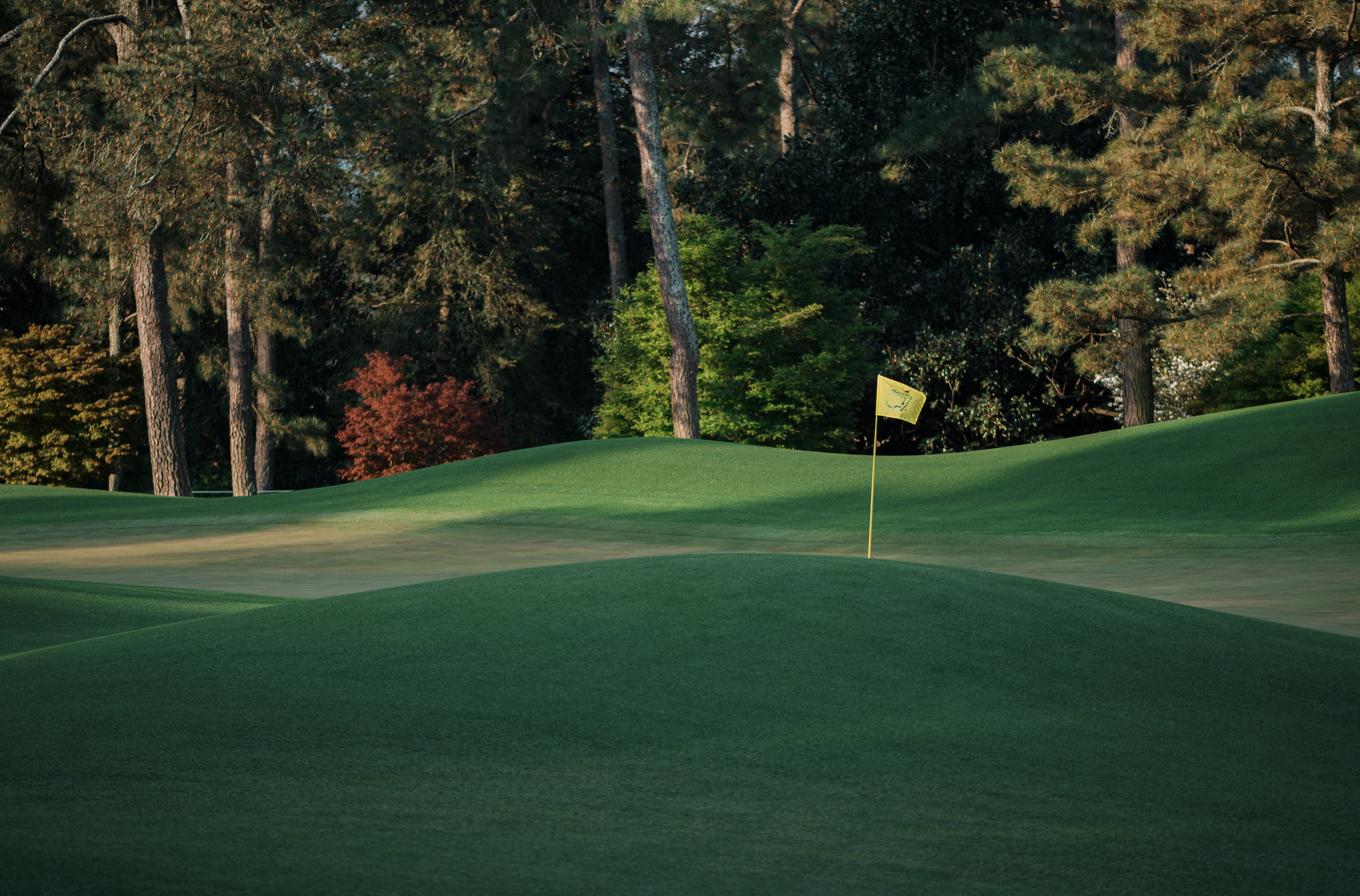
Right of No. 8 green
-
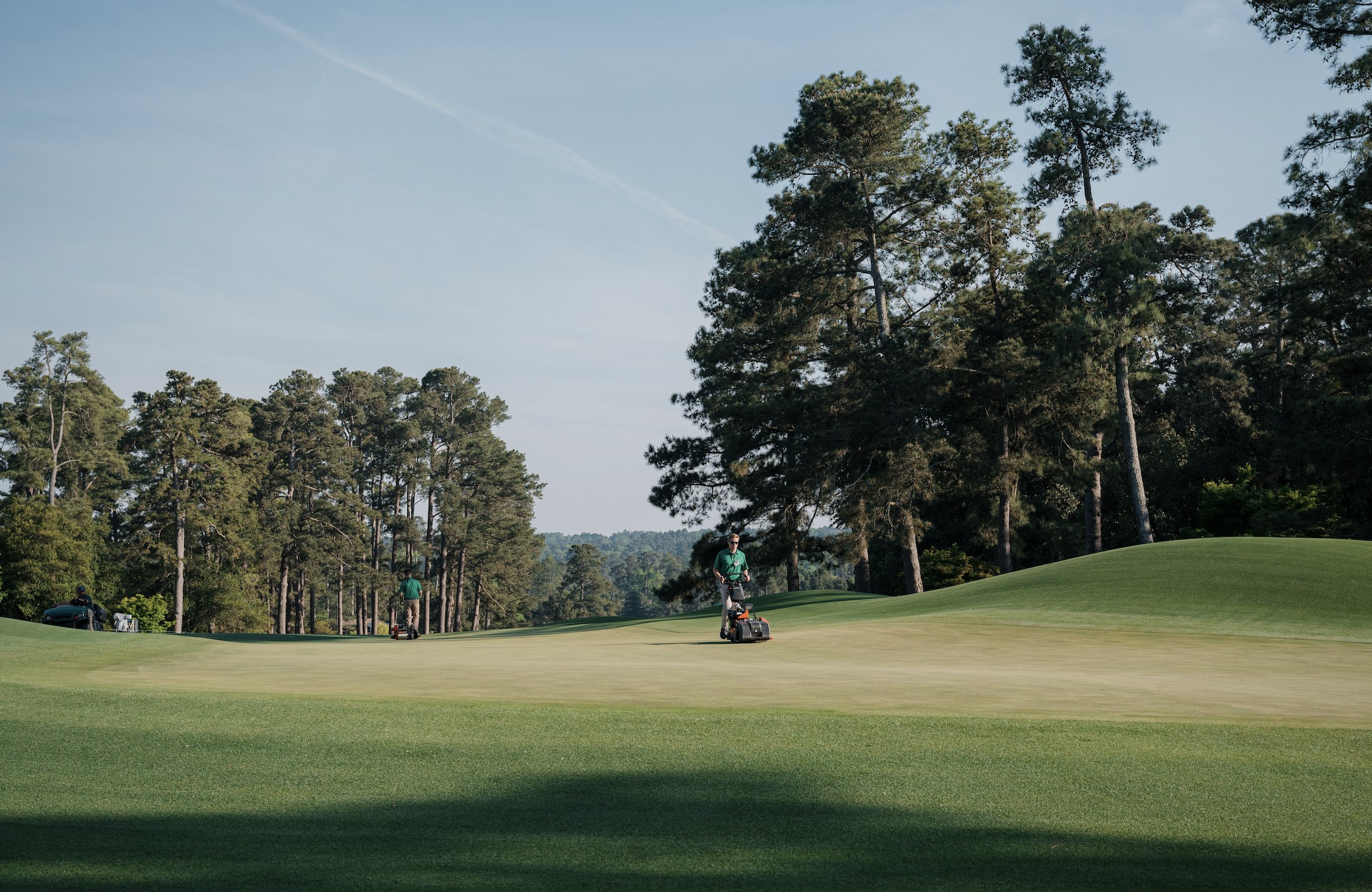
Behind No. 8
(Quick historical aside: Clifford Roberts’s absurd 1956 “redesign” of the eighth green shows how dull the site could have been. Take away the mounds, and you strip away not only the strategy of the hole but also the visual interest MacKenzie created. Kudos to Byron Nelson and Joe Finger for using archival photos to restore the mounds in 1979.)
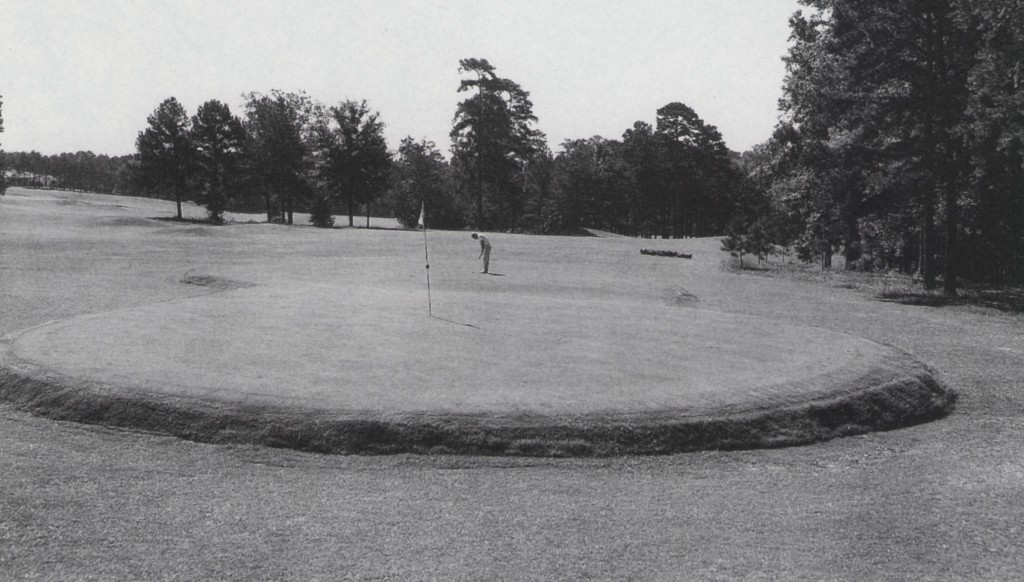
Clifford Roberts's idea of championship golf architecture
The humps and hollows of Mackenzie's 8th green at Augusta National seen in the 1930's and '40's👊 pic.twitter.com/RKN8AE3iR2
— Simon Haines (@Hainesy76) November 10, 2020
The orientation of the mounding around the green enhances the strategy of the hole all the way back to the tee. The mounds on the left side are the biggest, angling with the green from front right to back left. This gives an advantage to a second shot from the right side of the corridor, precisely where there happens to be a massive fairway bunker. Playing left off the tee, away from the bunker, brings the mounds left of the green more into play.
If, however, you’re playing No. 8 as a three-shot hole, aiming left off the tee is actually preferred. The mounds at the top of the hill run counter to those at the green—front left to back right—and help second shots from the left portion of the fairway get to the ideal layup zone short and right of the green.
That said, every player with designs on winning the Masters can reach the eighth green in two, so the green-side mounds are among the most impactful ground features at Augusta National. The fear of missing a second shot left causes many to bail right. And just like a drive that hedges away from the fairway bunker, a go-for-the-green attempt that falls weakly to the right will not skate by unpenalized. When approximately pin-high to the right of the green, players have to grapple not only with mounding but also with a putting surface that slopes away. The chip is doable but requires ultimate precision to garner an easy up-and-down.
But for players who go for the green in two and execute the shot, the mounds play a different role. Suddenly they become a helping hand, creating a quasi-punchbowl effect and funneling shots that are slightly off target back to the middle of the green. This factor is accentuated if you come from the high-risk right side of the fairway.
A final aspect of the mounding around the eighth green that often goes unnoticed is its artistry. The mounds continue to the right of the green, carrying across to the the front of the ninth tee, getting smaller as they go. This creates deception, as the eye is drawn to the large mounding at the green and tends to overlook the mini-moguls that can wreak havoc on the lie of a pitch shot farther right.
Augusta National’s eighth hole is the work of an architect who had an intuition for when to let the land lie and when to reshape it. While much of the hole—and the rest of the course—should be lauded for wise restraint and minimalism, the green and surrounds at No. 8 are undeniably maximal. It’s a good thing Alister MacKenzie and Bobby Jones weren’t concerned with adhering to one label or the other. Indeed, generally speaking, the greatest architects and courses succeed in blending multiple schools of thought into a cohesive whole that produces compelling golf.
More Masters coverage from The Fried Egg team:
Is Augusta National Turning Over a New Leaf?
Geoff Ogilvy’s notes on all 18 at Augusta National
Stories worth your time and tracking at the 2022 Masters
The Art Behind Augusta’s Roars: Focal points in Alister MacKenzie’s routings
Tiger’s Masters flirtation is something more than ceremonial


 by
by 